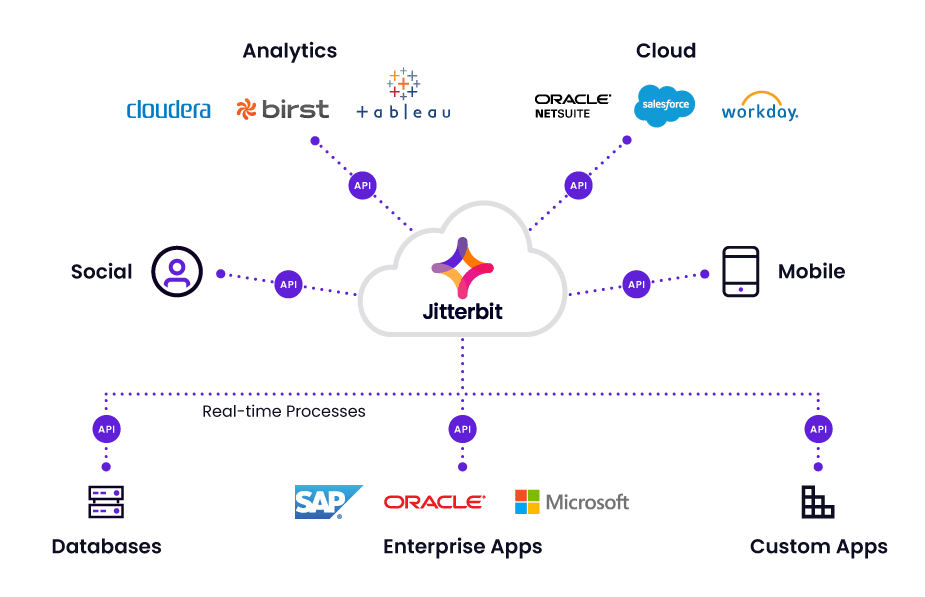In the ever-evolving landscape of technology, API Integration stands out as a crucial element that facilitates seamless communication between different software applications. As businesses increasingly rely on diverse software systems to operate efficiently, understanding API integration becomes essential. This article will delve deep into what API integration is, its significance, types, and best practices to optimize your integration strategies.
What is API Integration?
API, or Application Programming Interface, acts as a bridge between two software applications, allowing them to communicate with each other. API integration involves connecting different applications via their APIs to streamline data sharing and functionality. It enables businesses to automate processes, enhance user experiences, and leverage the capabilities of various software tools.
Imagine a scenario where a customer wants to make a purchase on an e-commerce website. The website needs to connect with payment gateways, inventory systems, and shipping services. API integration facilitates this by allowing these systems to interact smoothly, ensuring a seamless transaction experience for the customer.
Why is API Integration Important?
- Enhanced Efficiency: Automating tasks through API integration reduces manual efforts and streamlines workflows. This leads to increased productivity and faster response times.
- Data Sharing: With API integration, businesses can share data across platforms effortlessly. This helps in maintaining consistency and accuracy of information.
- Scalability: As businesses grow, their software needs evolve. API integration allows for easy scalability by enabling organizations to connect new tools and technologies without major overhauls.
- Improved User Experience: A seamless integration enhances the end-user experience. For example, users can access various features without switching between applications, providing a more cohesive experience.
- Cost-Effectiveness: By automating processes and reducing manual errors, API integration can lead to significant cost savings over time.
Types of API Integration
Understanding the different types of API integration can help organizations choose the right approach based on their needs. Here are the most common types:
- Open APIs (Public APIs): These APIs are publicly available and can be accessed by anyone. They are often used to allow third-party developers to create applications that interact with a company’s software.
- Partner APIs: These APIs are shared with specific business partners. They are designed to facilitate collaboration and integration between companies, enabling them to share resources and data securely.
- Internal APIs (Private APIs): Internal APIs are used within an organization to connect various internal systems and applications. They enhance operational efficiency by allowing different teams to access and share data easily.
- Composite APIs: These APIs allow multiple endpoints to be accessed in a single request. They are particularly useful when a user needs to interact with multiple services at once.
Best Practices for API Integration
To ensure successful API integration, it is vital to adhere to best practices. Here are some key considerations:
- Define Clear Objectives: Before starting the integration process, clearly define what you aim to achieve. This could include improving data flow, enhancing user experience, or automating specific tasks.
- Choose the Right API: Selecting the right API for your needs is crucial. Evaluate the API’s capabilities, documentation, and community support. Ensure that it aligns with your technical requirements.
- Prioritize Security: Security should be a top priority when integrating APIs. Implement robust authentication mechanisms, such as OAuth, to protect sensitive data.
- Monitor Performance: Regularly monitor the performance of your API integrations. This helps identify potential issues early and ensures that your integrations are functioning optimally.
- Stay Updated: APIs evolve over time, with new versions and features being released. Stay informed about updates to the APIs you use to ensure compatibility and take advantage of new functionalities.
- Document Everything: Proper documentation of your API integration process helps in maintaining clarity and facilitates troubleshooting in the future.
Challenges of API Integration
Despite its many benefits, API integration comes with challenges that businesses must navigate:
- Compatibility Issues: Different systems may have varying protocols and standards, leading to compatibility issues during integration.
- Data Security Risks: APIs can expose sensitive data if not properly secured, making them potential targets for cyberattacks.
- Version Control: Maintaining multiple API versions can be complex, especially if different applications rely on various versions.
- Performance Monitoring: Continuous monitoring of API performance can be resource-intensive, requiring dedicated tools and personnel.
Real-World Applications of API Integration
API integration has numerous applications across various industries. Here are some examples:
- E-commerce: Online retailers use API integration to connect their e-commerce platforms with payment gateways, inventory management systems, and shipping services. This ensures a smooth shopping experience for customers.
- Healthcare: In the healthcare sector, API integration enables seamless data sharing between different healthcare providers, allowing for better patient care and streamlined operations.
- Travel: Travel agencies utilize API integration to connect with airlines, hotels, and rental services, providing customers with a unified platform to book travel services.
- Finance: Financial institutions use API integration to enhance their services, allowing customers to access multiple financial products through a single interface.
The Future of API Integration
As technology continues to advance, the future of API integration looks promising. Here are some trends to watch for:
- Increased Automation: Automation will play a significant role in API integration, enabling businesses to connect various applications with minimal manual intervention.
- Artificial Intelligence (AI) Integration: AI will increasingly be integrated into APIs, allowing for smarter applications that can learn from data and provide enhanced functionality.
- Microservices Architecture: The adoption of microservices will drive the need for more robust API integration strategies, enabling organizations to build scalable and flexible applications.
- Low-Code/No-Code Platforms: These platforms will empower businesses to create and manage API integrations with little to no coding experience, making integration accessible to a wider audience.
Conclusion
API integration is a vital component of modern software development, enabling businesses to streamline operations, enhance user experiences, and improve efficiency. By understanding its significance, types, and best practices, organizations can leverage API integration to stay competitive in an increasingly interconnected world. As technology continues to evolve, staying informed about the latest trends and developments in API integration will be essential for success.



